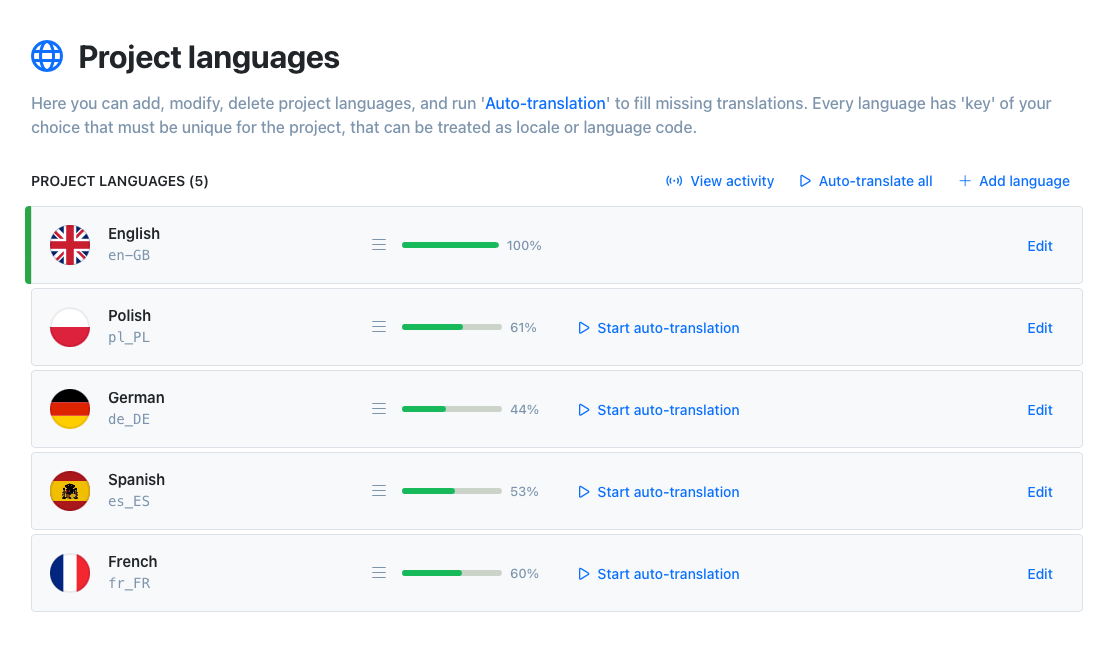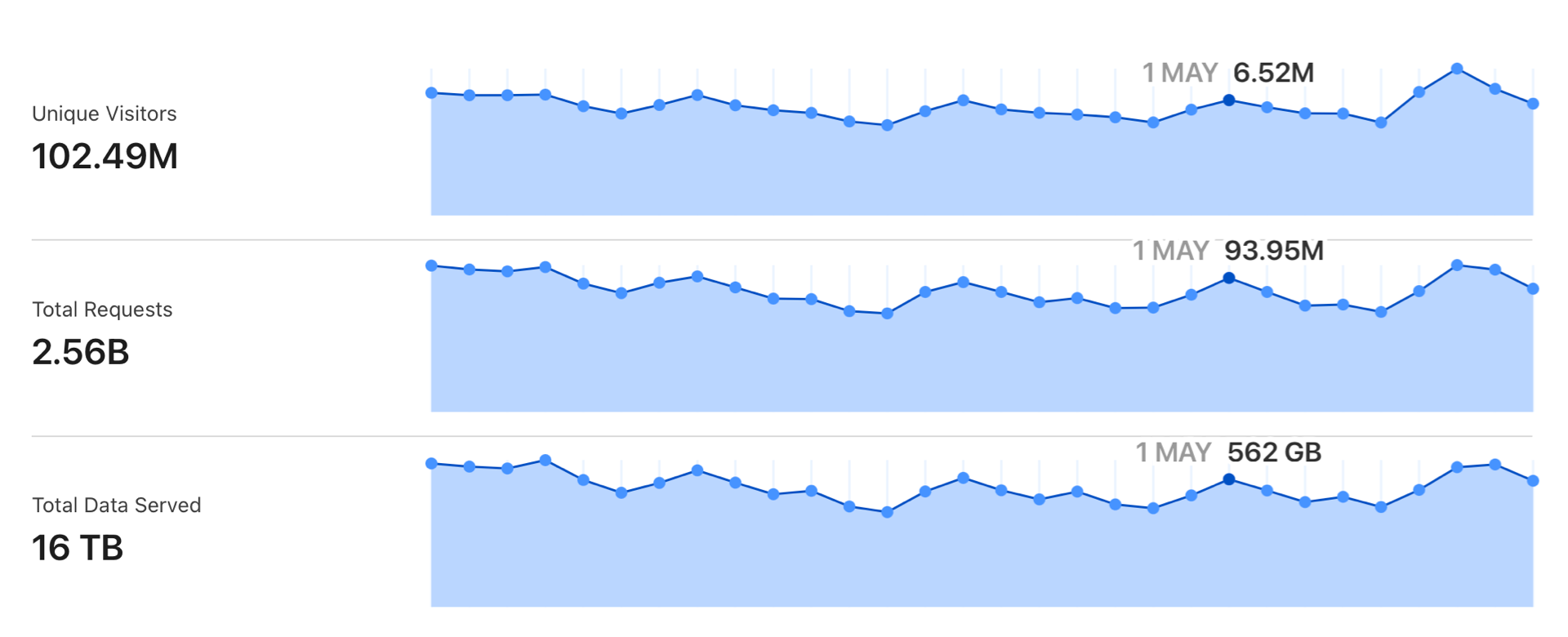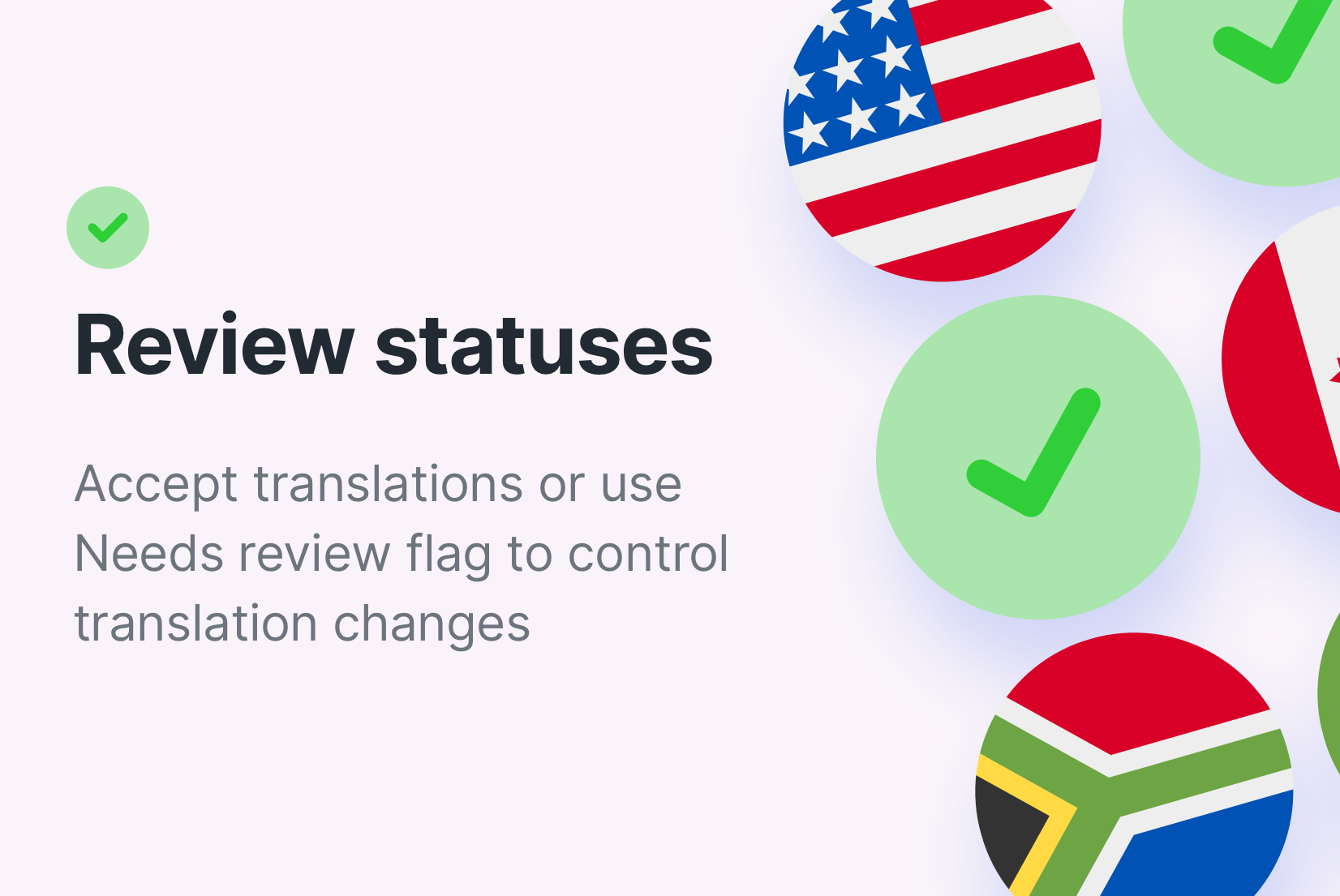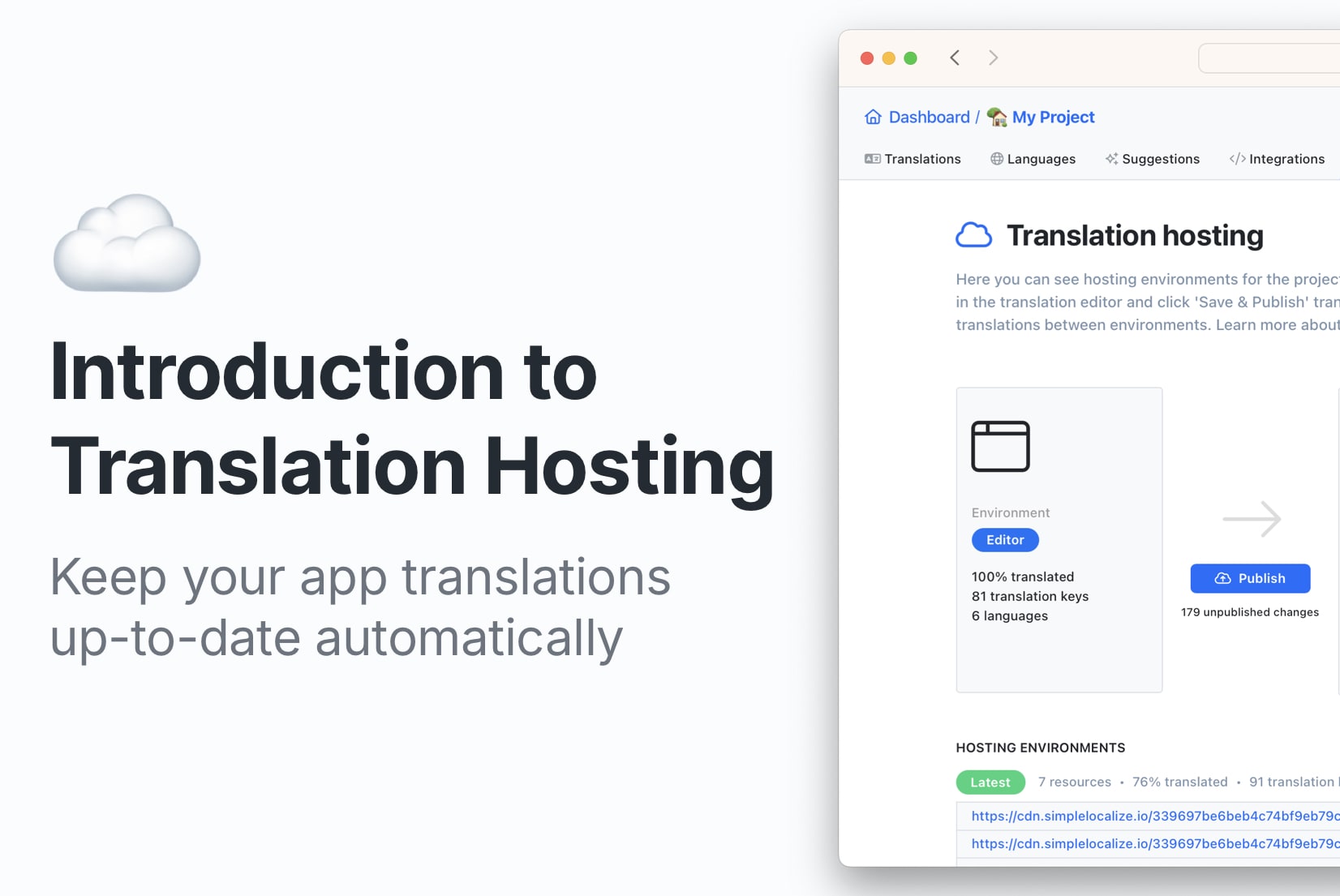Continuous Localization
Keep your translations always up-to-date with translation hosting feature.
Save time on your localization efforts and reduce costs.

- Auto-translation
- Screenshots with OCR
- AI-powered adjustments
- Built-in Automations
- Markdown support
- Variables highlighting
- Bulk Actions
- Context-aware translations
- Acceptance statuses
- Quality checks
- Comments & mentions
- Real-time collaboration
How it works?
Import source translations to SimpleLocalize, auto-translate them to other languages.
Export translations to your local files or publish them as hosted translations.
Auto-translation
Translate your application into multiple languages with just a few clicks. Choose from OpenAI ChatGPT, Google Translate or DeepL translation providers to translate your texts. Adding support for new languages has never been easier.
Learn more about auto-translation
Translation Hosting
Get your translations lightning fast with our CDN. We provide a simple way to host your translations and serve them safely to your users.
Get started with translation hosting{
"en": {
"CREATE_ACCOUNT": "Create account",
"SIGN_IN": "Sign in",
"WELCOME_TO_THE_JUNGLE" : "Welcome to the jungle"
},
"es": {
"CREATE_ACCOUNT": "Crear cuenta",
"SIGN_IN": "Iniciar",
"WELCOME_TO_THE_JUNGLE": "Bienvenido a la jungla"
}
}
Content delivery network
SimpleLocalize hosting for translations acts same as a content delivery network but for your translations. We rely on Amazon S3 and Cloudflare CDN to deliver your translations to your users all over the world. You can change texts and strings in your app without any hassle, in real time, without any downtime.
Get started with SimpleLocalize
- All-in-one localization platform
- Web-based translation editor for your team
- Auto-translation, QA-checks, AI and more
- See how easily you can start localizing your product.
- Powerful API, hosting, integrations and developer tools
- Unmatched customer support
"The product
and support
are fantastic."
"The support is
blazing fast,
thank you Jakub!"
"Interface that
makes any dev
feel at home!"
"Excellent app,
saves my time
and money"
What is Continuous Localization?
Continuous localization is a process that integrates localization into the development cycle, ensuring that translations are updated in real-time as changes are made to the source content. This approach allows for seamless updates and ensures that all language versions of your application are always in sync with the latest changes. By automating the localization workflow, continuous localization reduces the manual effort required to keep translations up-to-date.
When to Use Continuous Localization?
Continuous localization is ideal for projects with frequent updates and releases, such as agile development environments. It is particularly beneficial for applications with a global user base that require timely updates in multiple languages. By integrating localization into the development process, teams can ensure that new features and content are available in all supported languages simultaneously, improving the user experience for non-English speakers.
Why Continuous Localization is Better than Export/Import Workflow?
Unlike the traditional export/import workflow, continuous localization eliminates the need for manual file exchanges between developers and translators. This reduces the risk of errors and delays associated with manual processes. Continuous localization tools, like SimpleLocalize, provide real-time updates and synchronization, ensuring that translations are always current and consistent across all platforms. This streamlined approach enhances collaboration and efficiency.
Benefits of Continuous Localization
Continuous localization offers several benefits, including faster time-to-market, improved translation quality, and reduced localization costs. By automating the localization process, teams can focus on core development tasks while ensuring that translations are accurate and up-to-date. Additionally, continuous localization supports better collaboration between developers and translators, leading to higher-quality translations and a more cohesive user experience.
Other Localization Options
While continuous localization is highly effective, other localization options include the traditional export/import workflow and on-demand localization. The export/import workflow involves manually exchanging translation files, which can be time-consuming and error-prone. On-demand localization allows for translations to be requested and updated as needed, providing flexibility but potentially leading to inconsistencies. Each approach has its advantages, and the best choice depends on the specific needs and workflow of your project.




